Art Collection
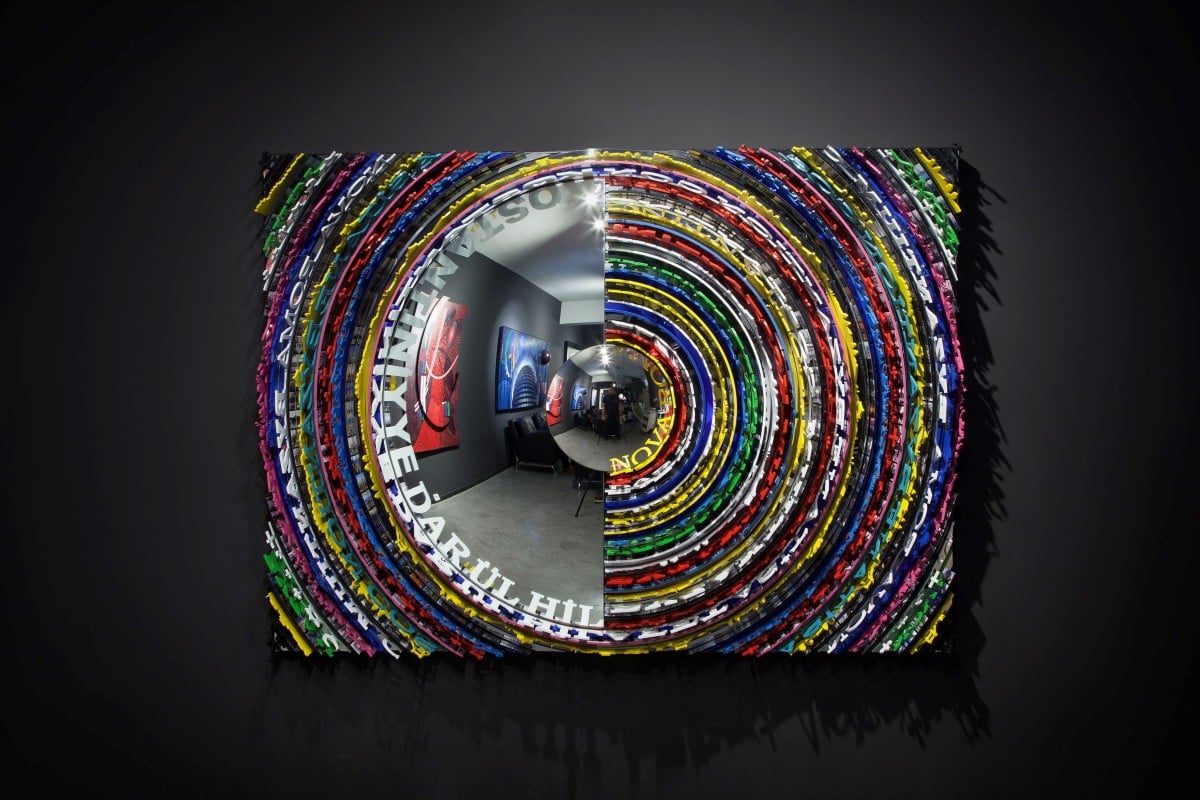
Ahmet Güneştekin / Beyazıt Hill 1A
Kostantiniyye Series, 2016, Mixed Media, 150 x 200 x 30 cm
Beginning ca. 2012, Güneştekin embarked upon a new series of works entitled Encounters. Initially large in scale and rectangular in format, they are composed of a plastic-like material rendered in relief made up of a forest of symbols that relate to the history of Istanbul, from mosques, churches, and synagogues, to the Islamic crescent, the Star of David, and the Orthodox and Roman crosses. Seen from the front, they appeared to be rigidly abstract stripe paintings, always with an orb embedded at the upper left symbolizing the Sun. However, when viewed from the side, their rigidity breaks down into a chaotic sea of forms leaping out into space. Up until recently, they were strictly concerned with the birth of Constantinople and its tumultuous history over the centuries, its rise and fall as a political and religious capitol, stopping short of the transformation into Istanbul. The use of a petroleum-based material like plastic also subtly but purposefully incorporated the role that oil plays in regional conflict and prosperity. He has continued to develop this body of work alongside his painting practice, and beginning last year he took the series into an entirely new direction. At the same time that he finally embraced and incorporated modern-day Istanbul into the series, he changed its format and demeanor. The objects have become circular, and the orb has shifted to the center and is rendered in metallic mirror. This allows the reliefs to change depending on where they are installed, since they reflect their surroundings, but also inscribe the viewer into them as they too are reflected when looking at the object head on. Güneştekin also began to use language instead of just symbols, as in the Encounter with Istanbul series, which incorporates all of the different names of the city over the centuries and even sets free whole areas of the tondo to allow the metal to shine brilliantly. On the other hand, in the Kostantiniyye series, which describes the names of the seven hills of Istanbul, the imagery is more densely packed and the mirrored orb is at the center, giving the objects the appearance of having been spun rapidly.

Ahmet Güneştekin / Dhul-Qarnayn
2016, Mixed Media, 130 x 70 x 50 cm
Güneştekin’s works in the Dhul-Qarnayn series can be considered as visual representations of the Dhul-Qarnayn figure that appears both in the Quran (Surah 18, verses 83-101) and the Torah. The artist encountered the “Dhul-Qarnayn” figure during his journeys. The word “Dhul-Qarnayn” means both “bicorn” and “belonging to or of two centuries.” According to the legend, Dhul-Qarnayn sets out on three journeys: one to the West where the Sun sets, one to the East where the Sun rises and one to a place that is in the middle of both directions. Thanks to its superhuman powers, he can do amazing things, which may seem impossible to the minds of people, such as building a wall to protect people against Gog and Magog, commanding darkness and light.
Although it is argued that the story of Dhul-Qarnayn appears for the first time in the Surat Al Kahf, it dates back to the earliest written record. Carved on a stone table in cuneiform 3500 years ago in Babylonia, this written record is the longest poem in history. It tells the epic journey of the King Gilgamesh of Uruk, who was on a quest to find eternal life. Despite the fact that the intriguing legend of Gilgamesh, which fascinated our forefathers for centuries as a masterpiece, is as old as the invention of writing, it has managed to maintain its relevance and significance by transcending time and space as it addresses universal human values. Gilgamesh is a unique, strong and valiant ruler who can smash walls down. He is a dazzling and heroic warrior. On his journey to find eternal life, he kills the Bull of Heaven, cuts its horns off and places them on his head. This way, not only does he transfer the power of the bull to himself but also makes its soul a part of his own soul. The horn in the artworks in the Dhul-Qarnayn series is a significant element, and serves as an indicator of the artist’s interpretation that Gilgamesh could be the Dhul-Qarnayn. The artist doesn’t strive for a direct and perfect match or overlap. Instead, he re-constructs Dhul-Qarnayn’s journey by interpreting it through his own experiences.
During his travels, Dhul-Qarnayn comes across this very unusual community. The amazement Dhul-Qarnayn feels in the face of their ways of living and thinking; and the similarities between Dhul-Qarnayn’s journey and Gilgamesh’s imaginary journey provided a basis for Güneştekin’s artistic creation. The community catches Dhul-Qarnayn’s attention due to their different practices. These people are humble, fair and compassionate. They bury their dead in front of their houses, which have no doors. Furthermore, they have no leaders, wealth or poverty, they have no judges and do not know violent disagreements, and do not commit murder.
The striking similarities between the people Dhul-Qarnayn encountered and the Ezidis, an indigenous ethnic group of north Mesopotamia whose shared values implicitly refer to the foundations of socialism, provided the philosophy behind his works. In this context, Güneştekin’s starting point is diversity. Believing that the place of a human being in the universe is a relationship of powers, he embraces all differences that make up life as a relationship of powers, and makes sense of his life in the broadest sense, together with death. In his works that will be exhibited at Contemporary Istanbul, Güneştekin shares his interpretations through Dhul-Qarnayn-Gilgamesh, a figure that is in search of immortality.
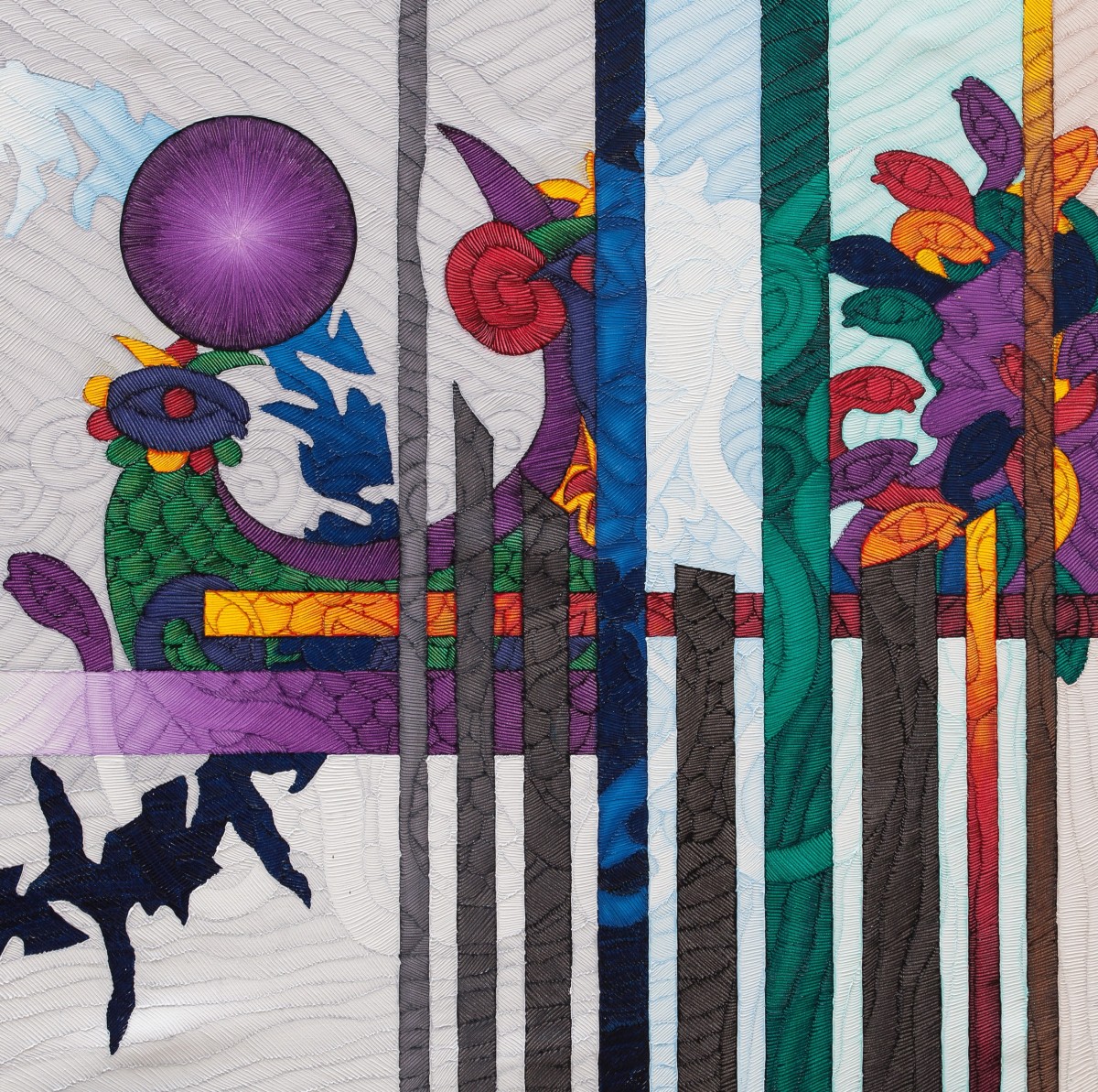
Ahmet Güneştekin / Secret of Medusa
2014, Oil on Canvas, 150 x 150 cm
Medusa was one of three sisters, the gorgons, but she was the only mortal one. Some versions say all three were born as monsters, but the predominant myths had them as gorgeous maidens. Medusa was so beautiful that Poseidon was crazy about her, but she didn’t care about him; Poseidon turned her and her sisters into monsters with live snakes covering their heads. Medusa kept her beautiful face but everything else was so monstrous. And whoever dared to look into her face ended up being turned into stone.
Perseus thus had a hard task. He asked Athena and Hermes for help and two of them, together with the nymphs, provided winged sandals to fly him to the end of the world where gorgons lived, a cap that made him invisible, a sword and a mirrored shield. The latter was the most important tool Perseus had, since it allowed him to see a reflection of Medusa’s face and to avoid being turned into stone. When he cut Medusa’s head off, from the drops of her blood suddenly appeared two offspring: Pegasus, a winged horse, and Chrysaor, a giant or a winged boar. It’s believed that those two were Medusa’s children with Poseidon. In any case, once he accomplished his task Perseus flew back and escaped Medusa’s sisters who tried to reach him. Later, Perseus used Medusa’s head as a weapon in many occasions until he gave the head to Athena to place it on her shield.
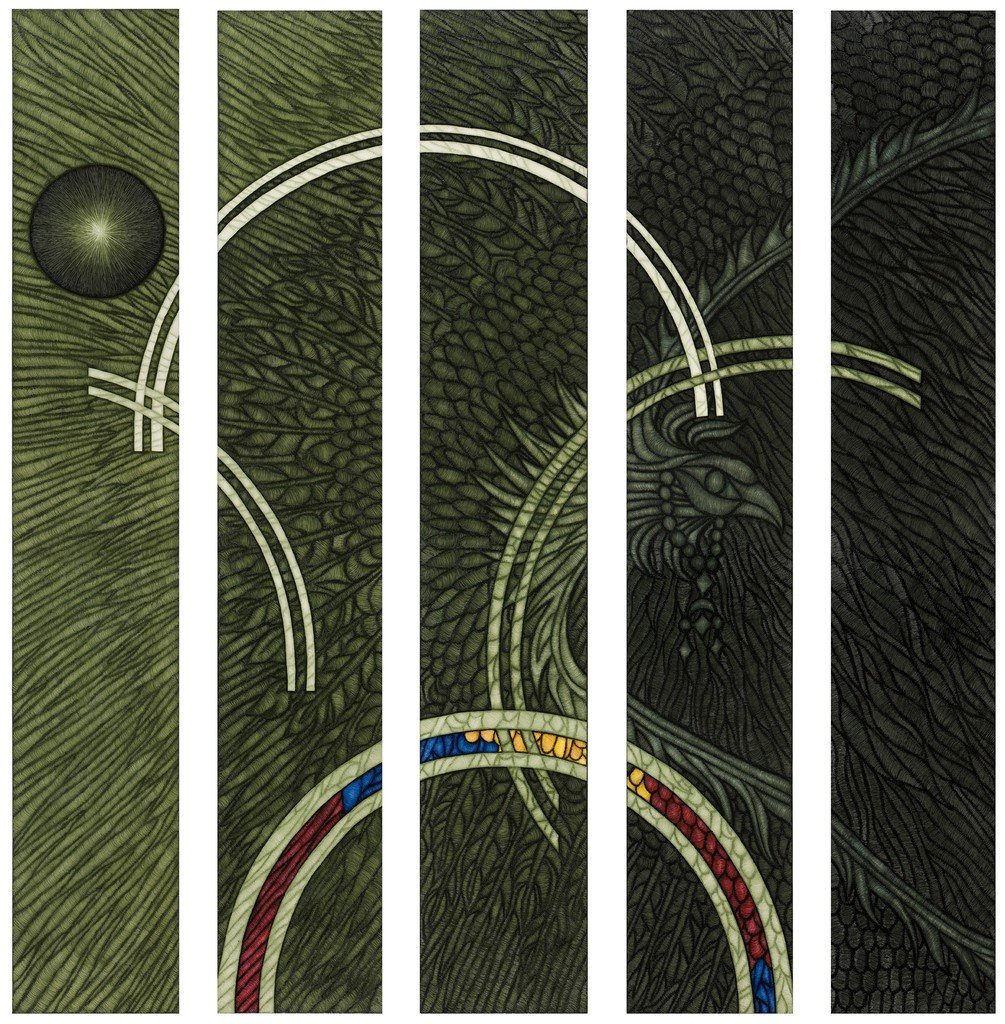
Ahmet Güneştekin / Phoenix
The symbolism of the Phoenix, like the mystical bird itself, dies and is reborn across cultures and throughout time. Ancient legend paints a picture of a magical bird, radiant and shimmering, which lives for several hundred years before it dies by bursting into flames. It is then reborn from the ashes, to start a new, long life. So powerful is the symbolism that it is a motif and image that is still used commonly today in popular culture and folklore.
The legendary phoenix is a large, grand bird, much like an eagle or peacock. It is brilliantly coloured in reds, purples, and yellows, as it is associated with the rising sun and fire. Sometimes a nimbus will surround it, illuminating it in the sky. Its eyes are blue and shine like sapphires. It builds its own funeral pyre or nest, and ignites it with a single clap of its wings. After death it rises gloriously from the ashes and flies away. The phoenix symbolizes renewal and resurrection, and represents many themes, such as the sun, time, metempsychosis, consecration, resurrection, life in the heavenly Paradise, and virginity.
Greek historian Herodotus wrote that priests of ancient Heliopolis described the bird as living for 500 years before building and lighting its own funeral pyre. The offspring of the birds would then fly from the ashes, and carry priests to the temple altar in Heliopolis. In ancient Greece it was said the bird does not eat fruit, but frankincense and aromatic gums. It also collects cinnamon and myrrh for its nest in preparation for its fiery death.
In Asia the phoenix reigns over all the birds, and is the symbol of the Chinese Empress and feminine grace, as well as the sun and the south. The sighting of the phoenix is a good sign that a wise leader has ascended to the throne and a new era has begun. It was representative of Chinese virtues: goodness, duty, propriety, kindness and reliability. Palaces and temples are guarded by ceramic protective beasts and all lead by the phoenix. The mythical phoenix has been incorporated into many religions, signifying eternal life, destruction, creation and fresh beginnings. Due to the themes of death and resurrection, it was adopted a symbol in early Christianity, as an analogy of Christ’s death and three days later his resurrection. The image became a popular symbol on early Christian tombstones. It is also symbolic of a cosmic fire some believe created the world and which will consume it.
The Phoenix is also an alchemical symbol. It represents the changes during chemical reactions and progression through colors, properties of matter, and has to do with the steps of alchemy in the making of the Great Work, or the Philosopher’s Stone. Modern additions to the myth in popular culture say the tears of the phoenix have great healing powers, and if the phoenix is near one cannot tell a lie. Continually morphing and re-morphing, the phoenix represents the idea that the end is only the beginning. Much like this powerful myth, the symbol of the phoenix will be reborn over and over again in human legend and imagination.
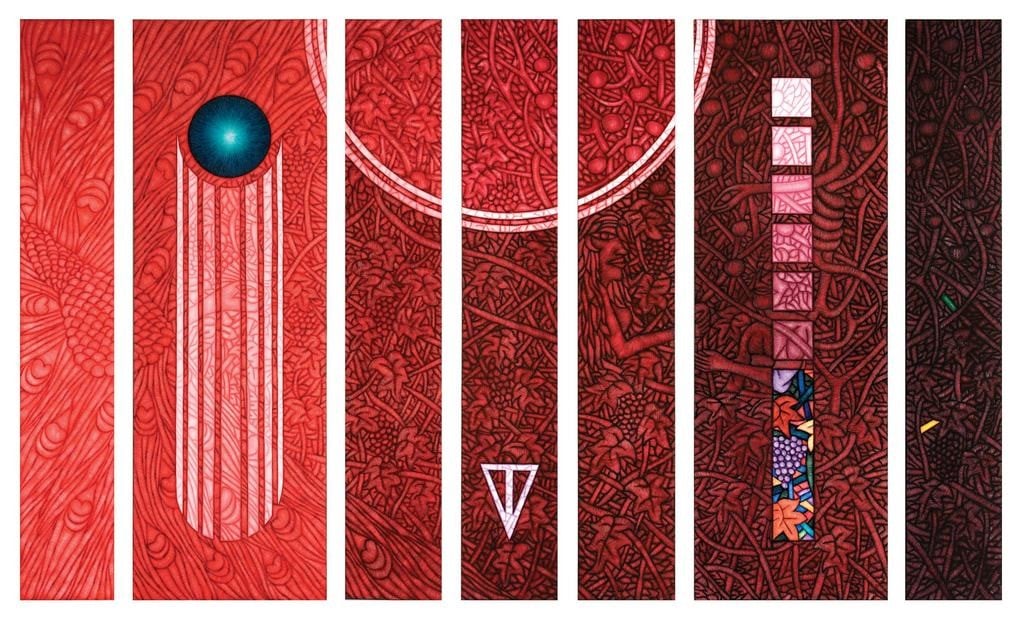
Ahmet Güneştekin / Seven Secrets of the Universe
After creating the world, God made a beautiful garden, called Garden of Eden. It was a paradise full of animals, fruits and trees. At the center of the garden, there was a tree with a special power to give the knowledge of good and evil to the person who ate its fruit. Adam was the first man created by God. God told Adam to look after the trees in the garden and warned him, “You may eat fruits from any tree you like, but not from the Tree of Knowledge. If you do not obey, you shall die:”
To give company to Adam, God created a female from his ribs, and named her Eve. Both Adam and Eve lived naked in the Garden of Eden, as they had no sense. In the same garden, there lived a snake. It advised eve to eat the fruit from the Tree of Knowledge, and told her that if she ate the fruit, she would become wise like God. Tempted by this, Eve ate the fruit and made Adam also eat it. Next day, when God came to the Garden, Adam and Eve hid themselves from Him, as now they had gained knowledge. God asked them, “Did you eat the fruit from the Tree of Knowledge?” The two admitted. God became angry and punished them, saying, “You did not obey me. So now, you will have to leave this Garden. You will have to live on Earth. Adam will have to work hard to grow crops and create food, and Eve will have to suffer the pain of giving birth.”
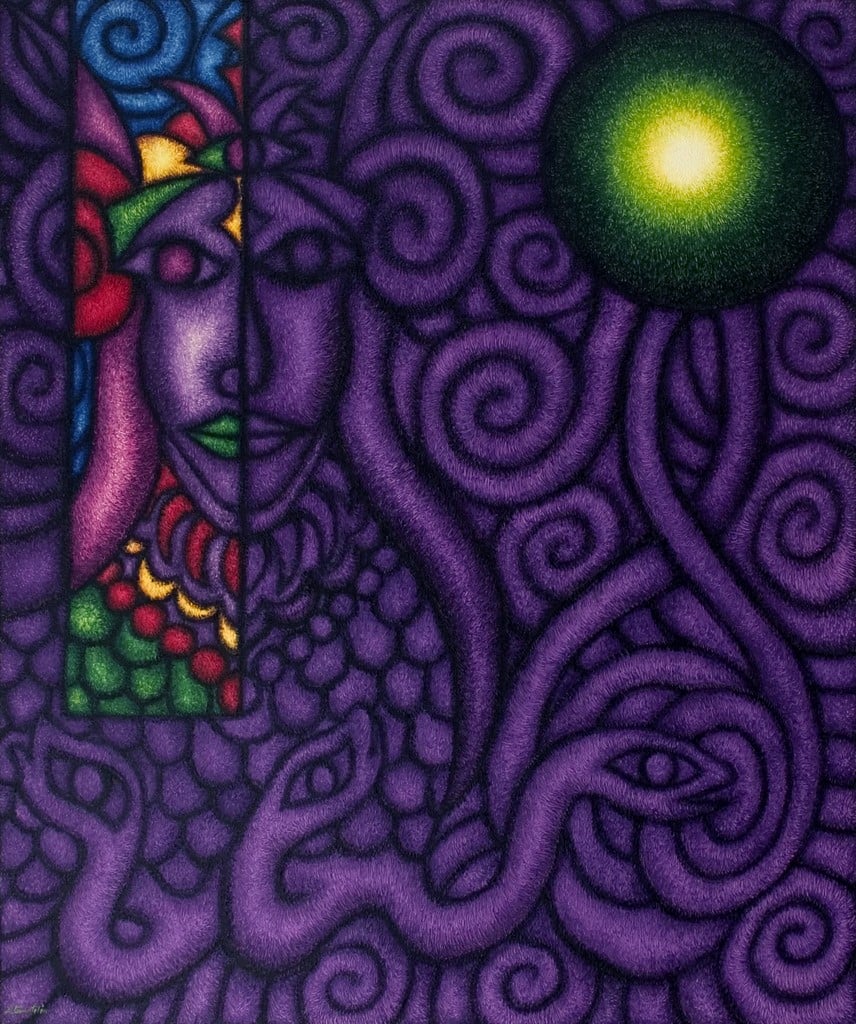
Ahmet Güneştekin / Shahmaran
Shahmaran is a mythical creature in Kurdish regions of the Middle-East. The name of Shahmaran comes from words "Shah" and "Maran". "Shah" is the Iranic title for a king, primarily the leader of the Iranians and their land and "mar" means snake in Iranian. In plural "Mar-an" means snakes. Shahmaran is known as the queen of the serpents. This story can be traced from the Middle East to India with different variations, one version is also found in the Arabian Night Tales as the story of Jemlia - the Sultan of Underground.
The Shahmaran is often depicted as a wise, intelligent woman, having female features above the waist and those of a serpent below. She is described as the queen of the snakes. When the Shahmaran dies, it is said that her spirit will pass to her daughter. There are different versions to the legend, as follows: Once there existed a wise snake woman, Shahmaran, who loved a traveler named Tahmasp. He was in love with her. He listened to her wisdom and stories. But when he thought she had no more stories to tell, he decided to return to his country, however he took Shahmaran with him and hid her. When Tahmasp returned to his land, the king had become very ill. One of the king's advisers exclaimed that the only way to recover was to eat Shahmaran. They took people, one by one, into the hamam to see if snake scales would come up, and when Tahmasp went, he was forced to tell where Shahmaran was hiding. When they found her, she said, "whomsoever takes a bite from my snake scales will gain the secrets of the world, but whomever takes a bite of my head will die instantly." Tahmasp took a bite of the head and the evil helper took a bite of the scales, but the helper died, and Tahmasp was not affected at all. Shahmaran had helped her lover while simultaneously killing her enemy.